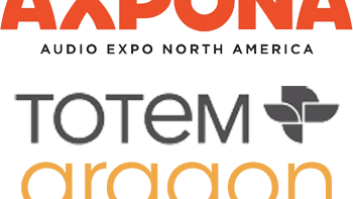Television manufacturers heading into International CES were for the most part thankful that the Federal Communications Commission (FCC) accelerated its schedule for implementation of the digital television tuner mandate last fall.
Manufacturers polled by TWICE said that the FCC’s readjusted tuner timetable respected their 18-month production ramp-up cycle and gave them enough time to make changes in products they will bring to market this spring — a little earlier than normal.
It also eliminated the confusion and lopsided demand that had resulted from the practice of marketing two classes of TVs (in a screen size range) — those with digital tuners and those without — during the former 50 percent phase-in period.
Vendors and retailers said that the phase-in requirements that called for compliance of various screen size ranges in 50 percent annual chunks over a one-year period often resulted in consumers opting for cheaper tuner-less analog TVs during the phase-in period, while the more expensive counterparts with onboard digital tuners languished on shelves.
The FCC had originally offered the 50 percent phase-in procedure, thinking it would be less of a hardship on manufacturers and consumers.
As of March 1, the current digital tuner requirement for 50 percent of midsize TVs 25 inches through 35 inches changes to 100 percent of all such sets. The changeover had originally been called for July 1.
All remaining smaller TVs and TV source devices that carry broadcaster tuners must add ATSC tuning by March 1, 2007, instead of the original July 1, 2007 date.
Additionally, all sets measuring 13 inches and smaller, which had been exempt under the original mandate, are now also required to add digital tuning, by the March 1, 2007 deadline.
The FCC said it removed the exemption on the smaller screen TVs because portable, battery-powered models enable reception of news and public-safety information in times of emergency.
Jim Sanduski, Samsung visual display devices marketing VP, said the elimination of the 50 percent phase-in requirement will make the integrated tuner transition more expeditious and far less complicated.
“The new revised mandate gives us until March 1, 2007,” for completion of all screen sizes, Sanduski said. “The March 1, 2006, deadline for 100 percent of screen sizes 25 inches and larger doesn’t impact us in HD CRT products, because we have had ATSC tuners in them for a year now. But we have some 27-inch models that will be impacted.”
He said Samsung has scaled back its analog CRT direct-view assortment considerably as the company has continued its transformation into a manufacturer of premium lines.
“With the March 1, 2006 deadline we have to introduce our new LCD television models (in 26W- and 32W-inches) in February, when normally we would have introduced them in March and April,” Sanduski said.
Consumer demand for analog televisions have seen little impact.
“Consumers don’t seem to be aware of the mandate,” Sanduski said. “But manufacturers are working very hard to minimize the increased cost that adding a tuner will entail.”
In preparation for the 50 percent tuner requirement on 25-inch to 35-inch televisions that began last July, TCL Thomson Electronics (TTE) introduced the first 480i standard-definition television (SDTV) with a fully integrated ATSC tuner.
Richard Dinsmore, TTE marketing director, said the company was disappointed in the acceptance rate of the SDTVs in 2005, adding that part of the problem was the lack of a hard cutoff date for analog television broadcasting.
He said the new March 1, 2006 DTV tuner mandate for midsize TVs will help drive consumers to the market.
“The percentage of consumers who get their TV signals terrestrially is in the 15 to 20 percent range,” Dinsmore said. “I don’t think that group of consumers has really considered the termination of analog TV broadcasts.”
Dinsmore said while most Americans may not rely on over-the-air broadcasts any longer — favoring instead cable or satellite services — many still have at least one set in the home that still receives only free over-the-air channels.
“We are trying to do everything we can to integrate a digital tuner and make it affordable for everybody,” Dinsmore said.
Currently, the addition of an ATSC adds a $50 to $80 delta to the cost of a television, Dinsmore said, “I’ve heard some manufacturers are saying no delta for 2006. We’ll be competitive.”
Although the FCC’s mandate contains a loophole allowing manufacturers to sell video displays as monitors if they lack both NTSC analog and ATSC digital tuners, Dinsmore said most retailers are opting for fully integrated product to avoid further confusing the public.
“Retailers are moving away from a monitor-only product offering. We want to be in line with what the retailers want to sell, and we are not seeing the demand for monitors any longer,” Dinsmore said.
Scott Ramirez, Toshiba TV products marketing VP, said he isn’t expecting a public outcry as the tuner mandate reaches the 100 percent mark in 2007.
“As we move to a period where 100 percent of sets have tuners, there isn’t a distinction in additional cost that can be made on the sales floor,” Ramirez said. “Depending on the brand, model and series, there will be a wide range of choices.
“I don’t think it will have that much of an impact on the consumer because there will be a wide variety of price points.”
As for inflating the cost of tiny-screen TVs below 13 inches, manufacturers said the category had only limited appeal.
“There aren’t really that many TVs in the sub 13-inch category with tuners on the market right now,” Ramirez said, adding that most products in that size range are sold without any tuning as combo products with integrated DVD players.












